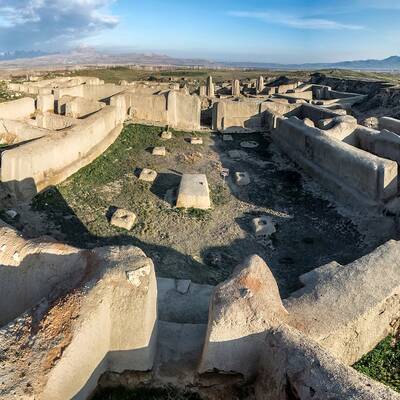
Naghadeh Museum (West Azerbaijan)
Naghadeh Museum is located near the historical hill of Hasanlu in the city of Naghadeh. The Hasanlu Teppe is a large and round mound with an approximate diameter of 285 to 250 meters and a height of 20 meters from the level of the Godar River. This mound is situated between the villages of Aminlu and Hasanlu. The initial inhabitants of the Hasanlu mound were most likely the Mannaeans, who left behind a vast and brilliant civilization. The discovered artifacts in this mound indicate that their enamel works are comparable to the Luristan bronze artifacts, suggesting a possible connection between these two tribes. The excavations of the ancient Hasanlu mound began in 1934.
In 1958, during the excavations of this area, the magnificent gold cup known as the "Hasanlu Gold Cup" was discovered. The original cup is preserved in the Iran National Museum, and a replica is displayed in the Naghadeh Museum. The cup was found in the arms of a person who had fallen to the ground with a dagger stabbed into his back. The cup's engravings are diverse and highly artistic, possibly inspired by ancient Persian epic tales.
One of the stories depicted on the cup is the tale of "Mehr Farrokh Dasht," who rides a chariot accompanied by his comrades to battle against enemies. The other story is about the victory of Fereydoun Pishdadi over Zahhak Maardoush. This artwork dates back over 3,200 years. The Naghadeh County Museum was opened in 2000 with an area of over 600 square meters and started its activities as an archaeological museum. The museum includes a display hall with wooden showcases for presenting and exhibiting artifacts. It houses more than 800 types of ancient objects, mainly discovered from the Hasanlu mound, among the 7,500 artifacts found.
The exhibited objects are divided into two sections. The first section contains pre-Christian era artifacts unearthed from the Hasanlu mound. These include various types of pottery in different shapes and colors, diverse enamel objects such as ewers, pins, glazed bricks, decorative objects, seals, glass vessels, and many others. The second section displays objects from other regions, including Parthian and Sassanian coins, coins from Islamic eras, inscribed pottery with Kufic script, various seals, decorative objects, and weapons.
